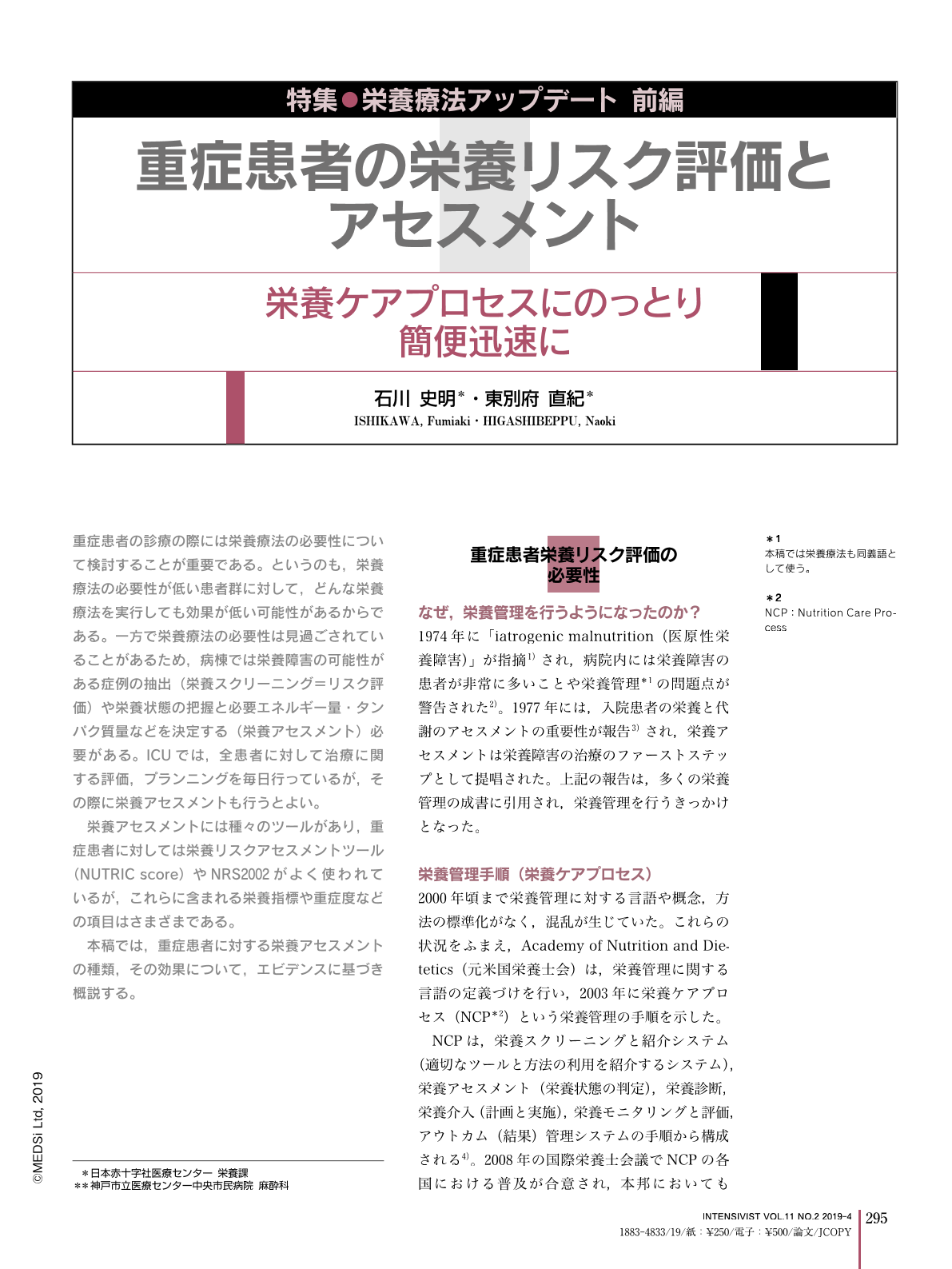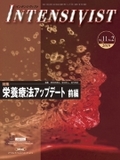Japanese
English
- 有料閲覧
- Abstract 文献概要
- 1ページ目 Look Inside
- 参考文献 Reference
重症患者の診療の際には栄養療法の必要性について検討することが重要である。というのも,栄養療法の必要性が低い患者群に対して,どんな栄養療法を実行しても効果が低い可能性があるからである。一方で栄養療法の必要性は見過ごされていることがあるため,病棟では栄養障害の可能性がある症例の抽出(栄養スクリーニング=リスク評価)や栄養状態の把握と必要エネルギー量・タンパク質量などを決定する(栄養アセスメント)必要がある。ICUでは,全患者に対して治療に関する評価,プランニングを毎日行っているが,その際に栄養アセスメントも行うとよい。
栄養アセスメントには種々のツールがあり,重症患者に対しては栄養リスクアセスメントツール(NUTRIC score)やNRS2002がよく使われているが,これらに含まれる栄養指標や重症度などの項目はさまざまである。
本稿では,重症患者に対する栄養アセスメントの種類,その効果について,エビデンスに基づき概説する。
It is important to examine the necessity for nutritional therapy when treating critically ill patients. Nutritional therapy may be ineffective for patients who do not need it. Since determining the necessity for nutrition therapy may be overlooked, in the ward, it is important to identify patients at an increased risk of malnutrition (nutrition screening = risk assessment), understand their nutritional status, and determine their energy and protein (nutritional assessment) requirements. In the ICU, evaluation and treatment planning for every patient every day are performed, but at the same time, nutritional assessment is also necessary. Various tools for nutritional assessment, such as the nutritional risk assessment tool (NUTRIC score) and NRS 2002 are often used to evaluate critically ill patients, but there are a wide range of items such as nutritional indicators and severity. In this article, we outline evidence-based tools developed for nutritional assessment of critically ill patients and their effectiveness.

Copyright © 2019, MEDICAL SCIENCES INTERNATIONAL, LTD. All rights reserved.


